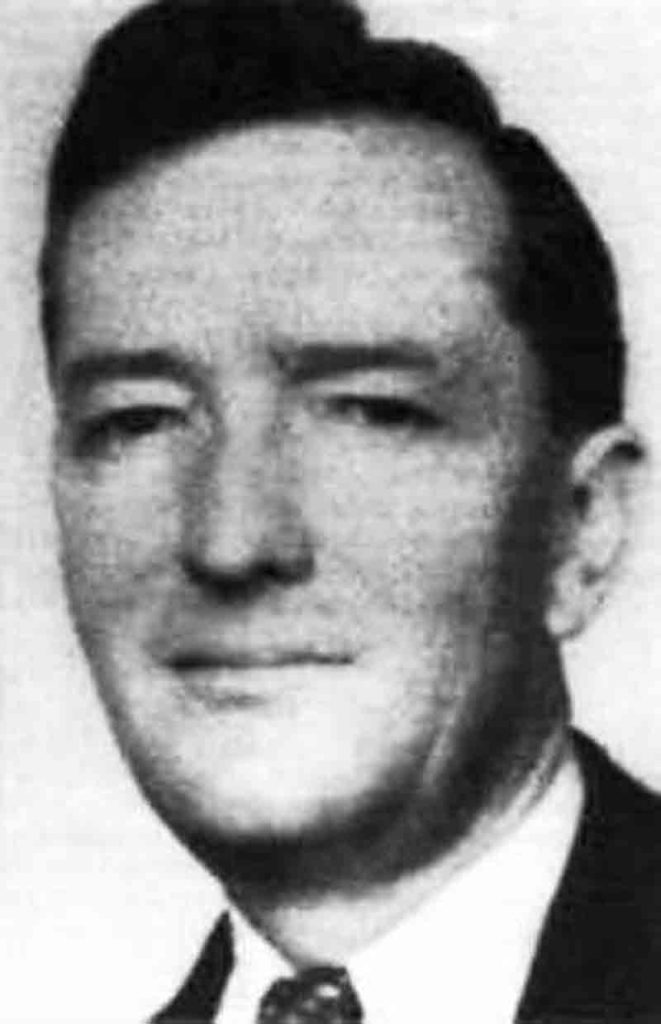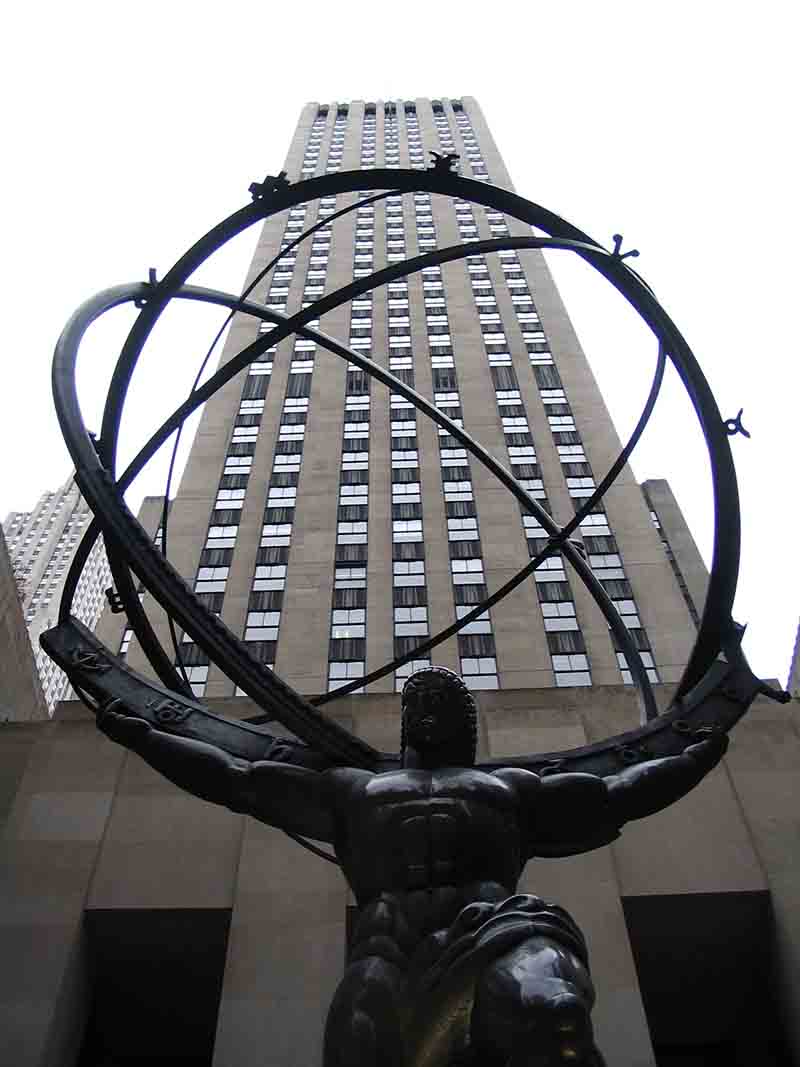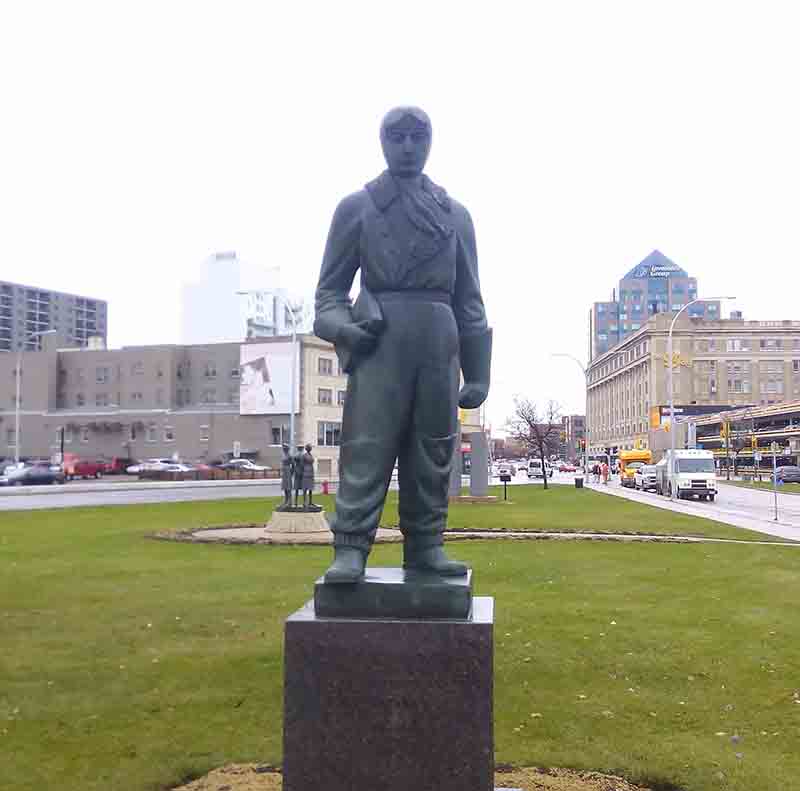
He had a humble childhood, but was destined for greatness.
His birth parents gave him up for adoption because they couldn’t care for him. He took his adopted parents’ surname, Stephenson, and dropped out of school to become a telegrapher.
He eventually became a decorated First World War air ace, a business titan and a spymaster who set up the British espionage system in the Americas, schooled the United States in undercover operations and established a spy school in Canada.
Aside from critical intelligence contributions to the Allies during the Second World War, Stephenson’s legacy also stretched to the big screen. Code-named Intrepid, Stephenson was the inspiration for Ian Fleming, the novelist whose works inspired the James Bond movies.
Over six decades, it’s estimated that about 20 per cent of the world’s population—1.6 billion people—have seen at least one Bond film.
When the First World War was declared, Stephenson added a year to his age and enlisted; when it ended, he was a captain, had been in a German prisoner of war camp, was a flying ace with 12 victories and had earned the Military Cross and the Distinguished Flying Cross. The DFC citation lauded Stephenson’s reports, noting they “contained valuable and precise information.”
After the Great War, Stephenson returned briefly to Canada, where his first business venture failed. He then left for England where his fortunes quickly improved when he designed a device for radio transmission of photographic images. He and his partner patented it and received royalties of 100,000 pounds a year for 18 years (the equivalent of nearly $2 million today).
Stephenson used that wealth to expand into other lucrative businesses worldwide: radio and aircraft manufacturing, plastic fabrication, construction, a film studio and pressed steel. The last initiative ushered him into espionage.
Stephenson’s role was to investigate enemy activities in the Americas, conduct counter-espionage and influence the United States.
During a trip to Germany to buy steel for auto bodies in the 1930s, Stephenson discovered the country’s steel production had been replaced with the manufacture of armaments and munitions. Steel production had been forbidden under the terms of the treaty that ended the First World War. Using his business connections, he learned that Germany had spent 800 million pounds in war preparations.
Stephenson’s findings fell on deaf ears in appeasement-minded Britain—until they reached Winston Churchill, who put the information to good use. In May 1940, Churchill was selected as prime minister of the British wartime coalition government and immediately embroiled Stephenson in covert activities.
Churchill sent Stephenson to the United States, ostensibly as the British Passport Control Officer, but in reality, to establish an intelligence service, the British Security Coordination (BSC) in New York City. Stephenson volunteered his services for free and funded some of the expenses to set up the organization.
This office was the connection between U.S. and British security organizations, including the Secret Intelligence Service, known as MI6, which collected and assessed intelligence, and the Special Operations Executive, established to send spies in behind enemy lines.
Stephenson’s role was to investigate enemy activities in the Americas, conduct counter-espionage and influence the United States, which was neutral until December 1941, to support Britain. As head of BSC, he was the intelligence liaison for Churchill and U.S. President Franklin D. Roosevelt.
Conditions in the U.S. were ideal for establishing a fifth column covertly supporting Germany. Urging the U.S. to stay out of the war or back Germany were isolationists, pro-German businessmen, anti-British Irish immigrants and descendants and communist sympathizers, as well as six million German-speaking Americans, a quarter-million of whom were born in Germany and were targeted by German propaganda.
The attack on Pearl Harbor on Dec. 7, 1941, pushed President Roosevelt to declare war on Japan and the other Axis powers.
Stephenson helped the U.S. set up its secret service, recommending to Roosevelt that his friend Bill Donovan head up the U.S. Office of Strategic Services, which evolved into the Central Intelligence Agency after the war.
The BSC also co-operated with the U.S. Federal Bureau of Investigation, resulting in the arrests of enemy agents and the breakup of a spy ring operating in North America.
“Bond is a highly romanticized version of a true spy,” said Fleming. “The real thing is…William Stephenson.”
The first U.S. espionage case of the war, in March 1942, relied on evidence supplied by the British chief censor in Bermuda and his assistant, who produced letters containing spy material.
“Under Sir William’s leadership BSC trained hundreds of Canadian and American parachutists for jumps into occupied Europe; caused the sinking of many enemy submarines by decoding their radio signals and pinpointing their position at sea; delayed Hitler’s attack on Russia by six weeks with a few calculated indiscretions; neutralized a vast German sabotage ring in the Latin American republics; [and] contributed to the smashing of dummy companies operated in various parts of the world by the German Industrial cartels,” wrote McKenzie Porter, assistant editor of Maclean’s magazine in the early 1950s.
Stephenson hired Pat Bayly, the University of Toronto professor who created Rockex, the Allies’ secure communications system, and Elizabeth Thorpe, who persuaded Vichy French officials to share enemy secrets and ciphers with the U.S. Eventually, there was a staff of more than 1,000, all intent on ferreting out enemy secrets and foiling enemy covert actions.
“In the penetration of enemy and unfriendly diplomatic missions in the Western Hemisphere and the discovery of their secret codes and ciphers, BSC was particularly adept,” wrote Montgomery Hyde, a former BSC agent, in The Quiet Canadian: The Secret Service Story of Sir William Stephenson.
BSC penetrated the cloak of ownership to suss out a network of more than 100 German-controlled companies in the U.S. that not only traded goods with the enemy, but also passed along information.

Coincidentally, these observers also uncovered illicit activities: a radio transmitter disguised as a piano, secret messages with the enemy and crew members that carried them.
Worry of Nazi domination of South America sparked British-U.S. counter-espionage operations, one of which uncovered a plot by the Bolivian military attaché in Berlin, Major Elias Belmonte, to stage a coup intended to bring Nazis to power. The plot was confirmed when a BSC operative stole a letter from the pocket of a Nazi sympathizer in a crowded elevator.
“We must copy…the great example of Germany since National Socialism has come to power,” wrote Belmonte. “The other countries will quickly follow our example and then with one sole ideal and one sole supreme leader, we will save the future of South America and will begin an era of purification, order and work.”
Bolivia declared a state of siege and rounded up Nazi sympathizers.
At the Pan-American conference six months later, 19 South American countries broke with Axis powers and formed a common defence agreement.
Operations were established in Canada, too. Station M fabricated letters and documents. Camp X in Whitby, Ont., trained hundreds of spies, intelligence officers and psychological warfare experts. The camp also handled much of the Allied intelligence traffic to Europe through its radio transmitter—tens of thousands of messages a day. It’s believed Fleming is an alumnus.
“Bond is a highly romanticized version of a true spy,” said Fleming. “The real thing is…William Stephenson.”
King George VI made Stephenson a knight in 1945. “This one is dear to my heart,” Churchill said, having made the recommendation. U.S. President Harry S. Truman awarded the Medal of Merit to Stephenson, the first to a non-American. He was invested as a companion of the Order of Canada in 1980.
“As a whole, Intelligence operations consist less of the blood-chilling adventures we read about than of hard work, endless patience and highly developed technical skills.
Before Stephenson could put the war behind him, he played a significant part in the defection of Igor Gouzenko, the cipher clerk in the Soviet Embassy in Ottawa in September 1954 who revealed the existence of a widespread espionage network, including the first “atom spies” under the direction of the Soviets in North America.
Stephenson recognized Gouzenko’s life was in danger and saw to it that he and his family were moved somewhere safe. Afterward, the Soviet secret police raided Gouzenko’s apartment.
Ultimately, 10 people were convicted and punished in the case, and a British nuclear scientist pleaded guilty to espionage charges.
After the war, Stephenson settled in Jamaica, followed by several friends, including Fleming, who would write his first Bond novel there.
In the 1950s, the Diamond Syndicate offered Stephenson a million pounds to solve a series of thefts from South African mines and any sum he named if he was able to stop the losses, which amounted to about 100,000 pounds every month.
Stephenson declined.
“I have just emerged from underground activities into the light of business and there I intend to remain,” said Stephenson. “I don’t think you realize what an octopus the Syndicate is grappling with.”
He informed his friend the thefts were operated by a murderous international gang with global connections.
Fleming used this to inspire the plot line to the Bond thriller Diamonds Are Forever, which would later be adapted into a film with the same name.
Stephenson, however, disabused the notion that all spies live adventurous and dangerous lives like that of James Bond.
“As a whole, Intelligence operations consist less of the blood-chilling adventures we read about than of hard work, endless patience and highly developed technical skills and infinitely careful and competent organization,” said Stephenson.
But the world will always have a need for spies.
“War has become a thing of instantaneous combustion engulfing civilian and soldier alike. Surely it is plain that against enemy attack today the first defence must be information: to find out when and where an aggressor intends to strike.”
Stephenson died in Bermuda in January 1989, at the age of 93.

Advertisement












